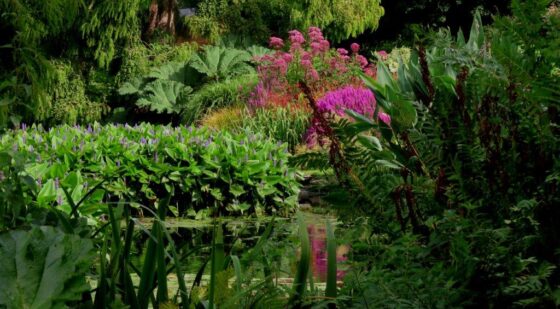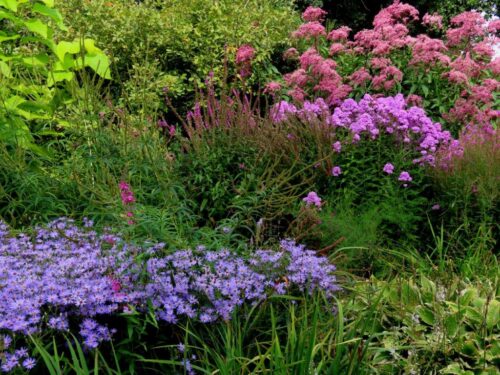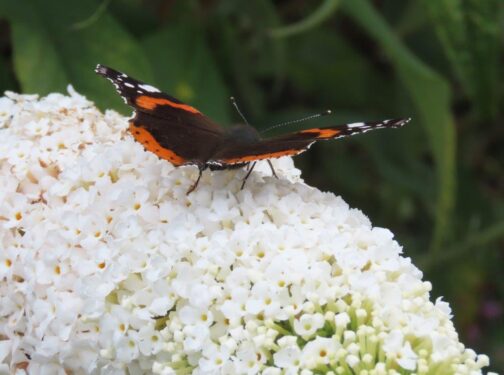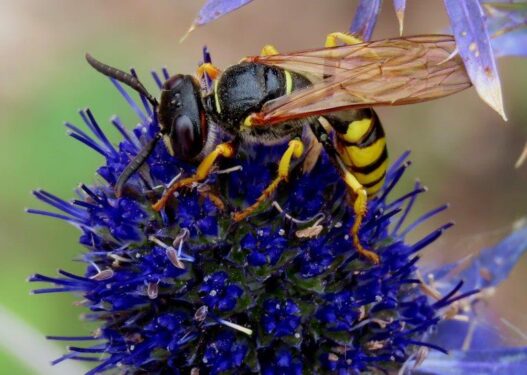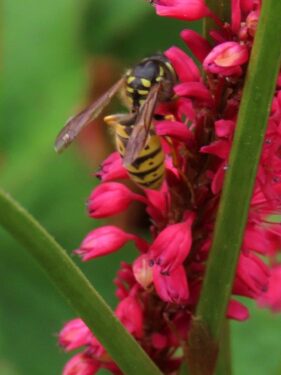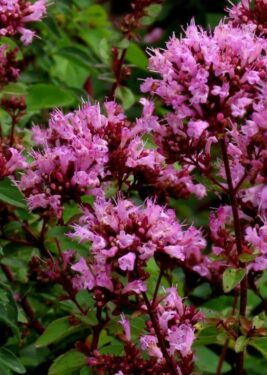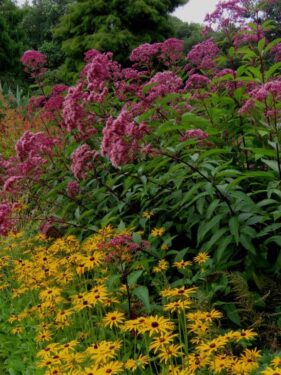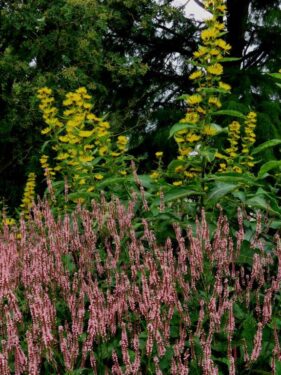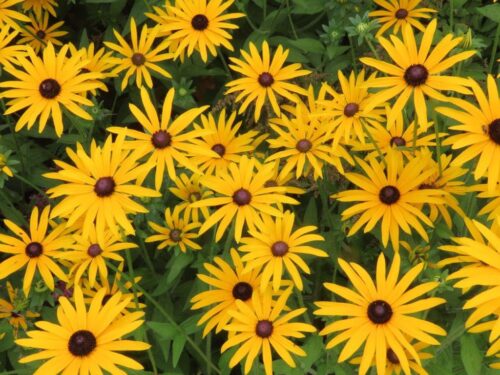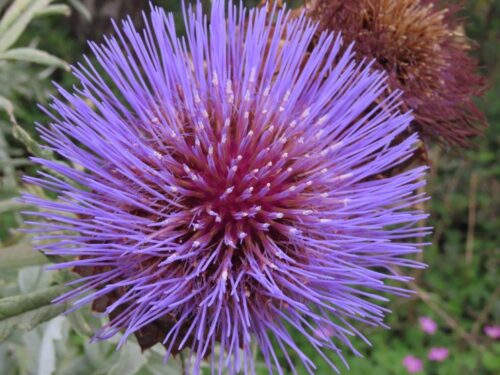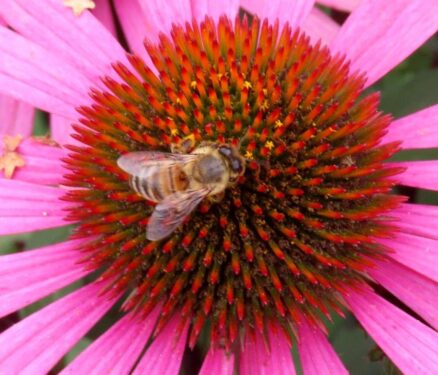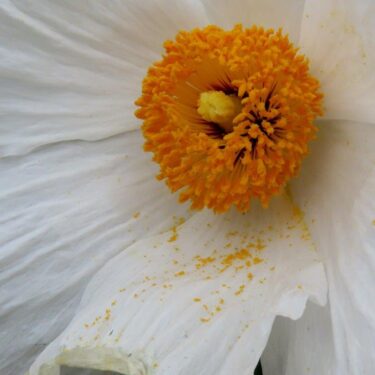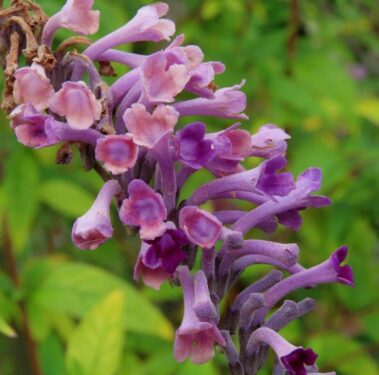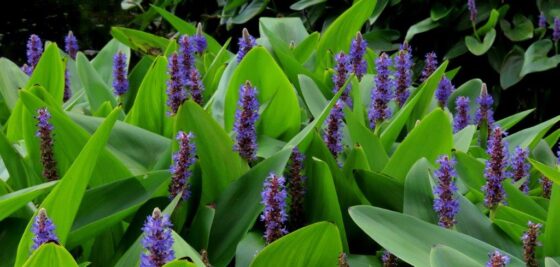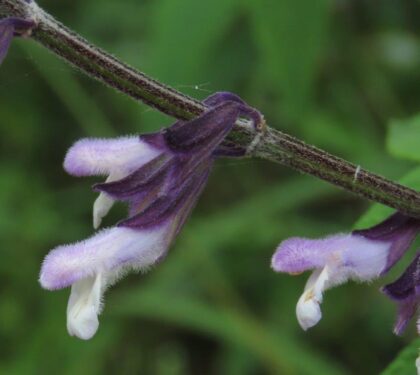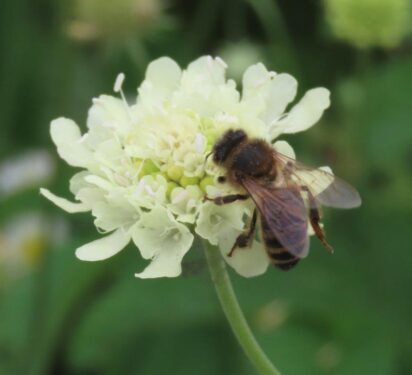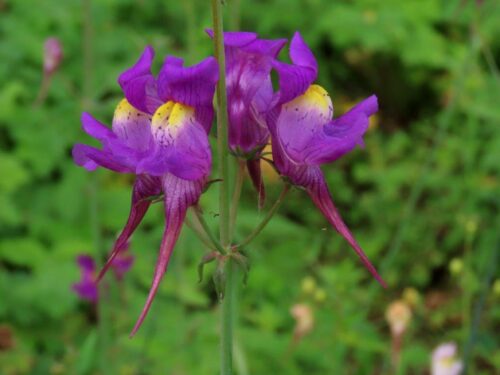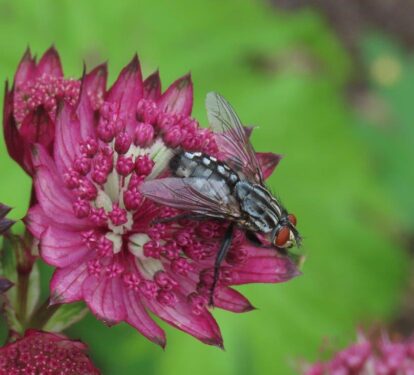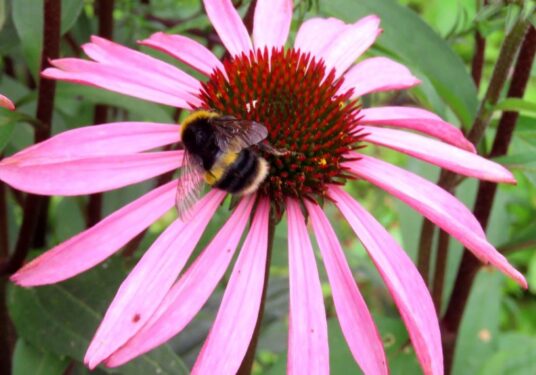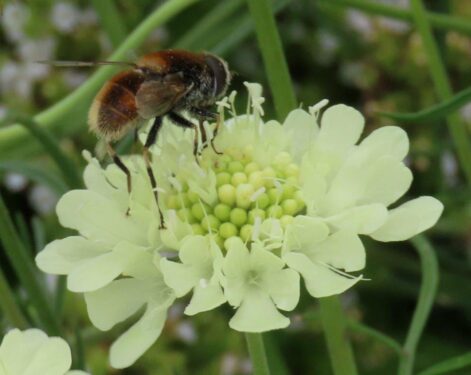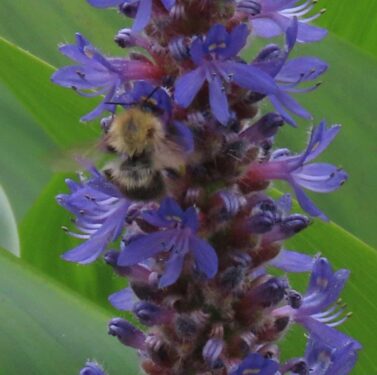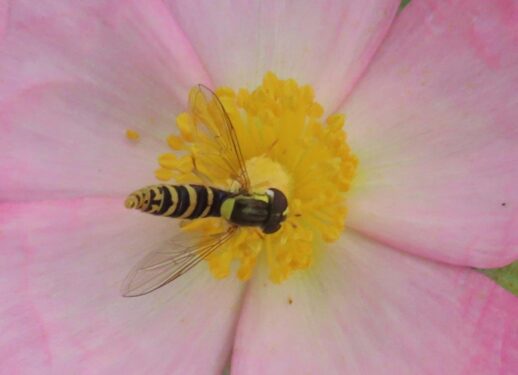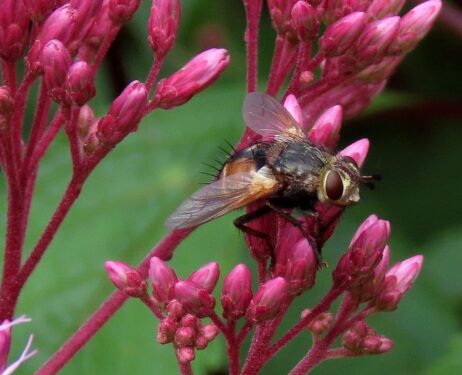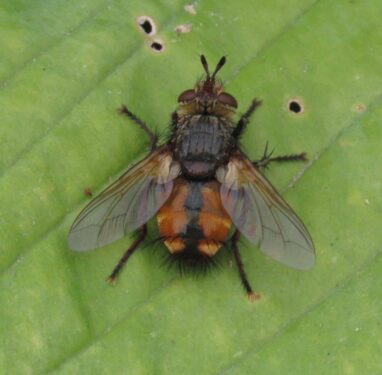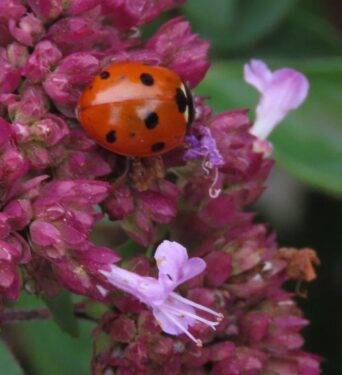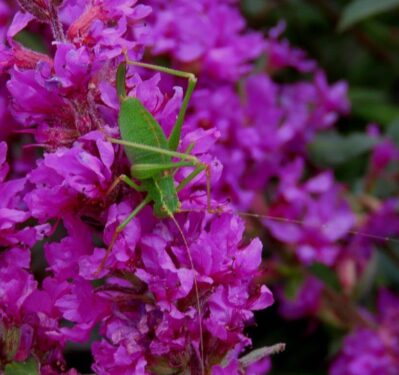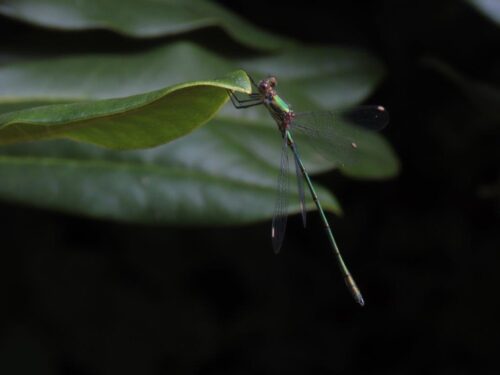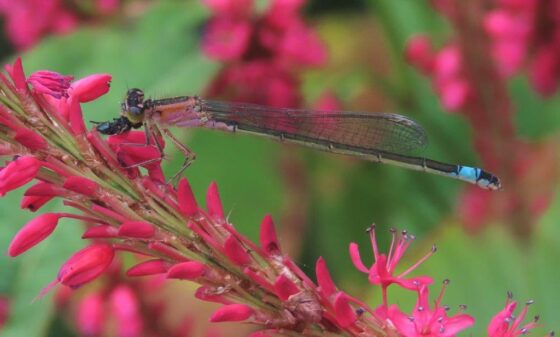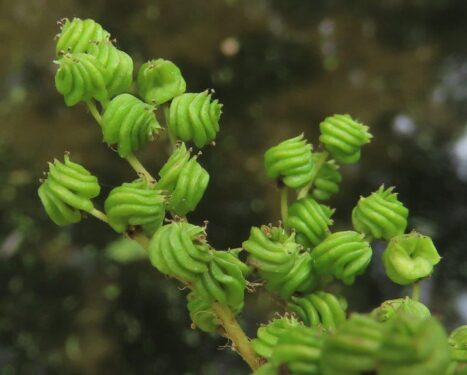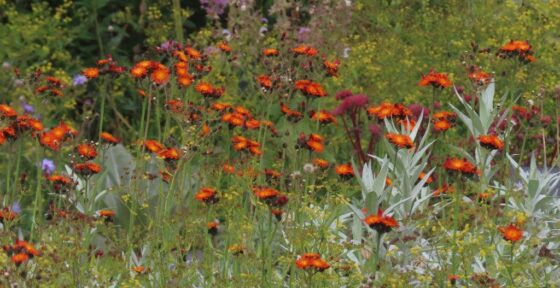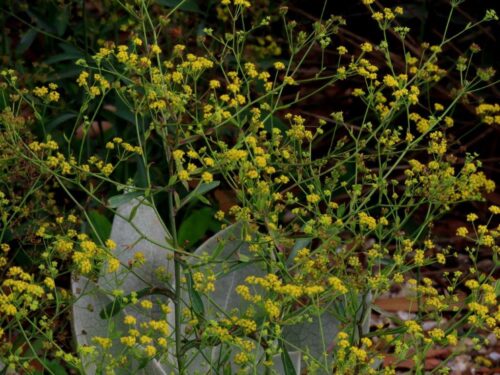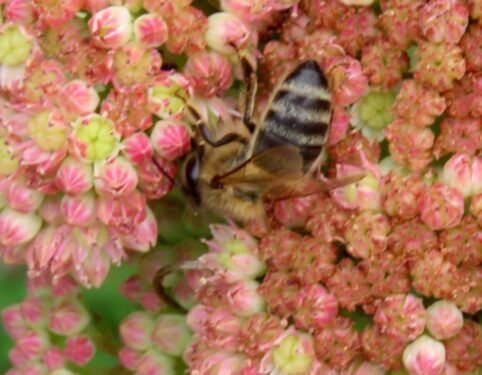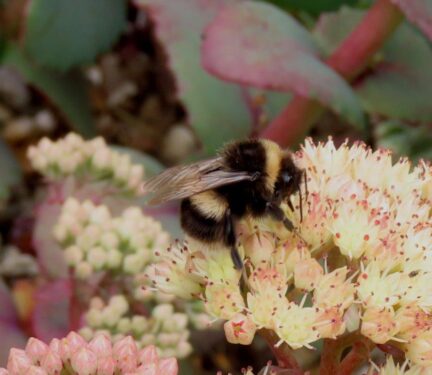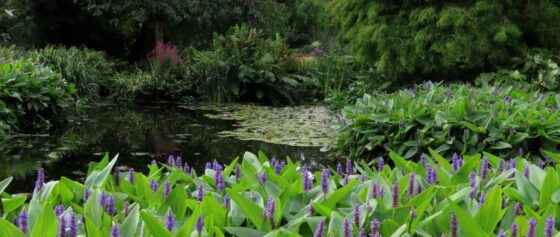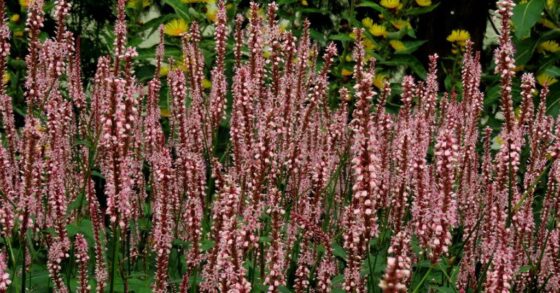What a difference a couple of weeks makes! Compared with my previous walk The Wild Side of Beth Chatto Gardens: the steamy jungles of Essex!! | Chris Gibson Wildlife, the third in my series of ‘Meet the Wandering Naturalist’ sessions in the Gardens coincided with a rather dull, blustery day; that and the advancing season combined to reduce the insect activity substantially. Nevertheless, there was more than enough for all who joined me strolling around and looking at nature.
Butterflies in particular were well down from their superabundance of the past month, with just a few Small Whites, Holly Blues, Gatekeepers and Red Admirals on show.
And the available insect food sources have moved on with the season. Buddleia, Lavandula and Eryngium are all but over (though where any flowers remain they are still exerting strong attraction) ……
… Bistorta, Nepeta and Origanum are perhaps starting to fade but a major draw nonetheless ….
… and now the daisy family is really beginning to assert itself as a force in the garden. Echinacea in particular is a magnet for bees, hoverflies and many more.
Of course we are lucky to have the space and different ground conditions to grow plants that provide sequential nectar and pollen resources through the year, and at the moment there is a whole host of others sharing the role:
Honeybees, bumblebees and hoverflies are among the most numerous of insect visitors …
… while parasitic tachinid flies also seem to be especially abundant at the moment. While often overlooked, their role in parasitising lepidopteran and other larvae cannot be overstated. The more the garden supports predators and parasites, the more its insect abundance (what some may call ‘pests’) are kept in check without recourse to poisons. Let’s hear it for our army of tachinids, ladybirds and wasps!
Dragonflies, damselflies and bush-crickets are also part of this predator realm, albeit relatively minor players numerically. This normally camouflaged Speckled Bush-cricket showed up remarkably well on the vivid Lythrum flowers …
… and damselflies included both the typical late-season Willow Emerald and this beautiful lilac-fronted form of Blue-tailed Damselfly, echoing the colours of its chosen perch.
But the bonus from their being fewer insects on show was that there was more time to talk about other wildlife, plants in particular. Coming into late summer, many are in fruit, and none is more distinctive than the unique churro-like seeds of Meadowsweet:
And although it may be a stretch too far to call planted plants ‘wildlife’, certainly anything that has embraced its wild side by spreading itself around the garden deserves that name. In the Gravel Garden, Fox-and-Cubs is doing that in such an artistic way that surely Beth would have approved…
… while in the same area, Sickle-leaved Hare’s-ear weaves its filigree fronds as a golden thread, linking the beds thematically and also through the years: once native to Essex, and only to Essex, when its habitat was threatened by roadworks half century ago it was rescued by a band of botanists – and it is likely that some of the seed came into Beth’s hands, and garden.
If anyone would like to join me in the garden looking at its wildlife, I am planning on repeating this walk (weather permitting) on 1st September, between 1100 and 1300. No need to book, just come to the garden (normal entry price – see our website for details) and ask at the Visitor Information Centre where I will be and when, and come along and find me! Nearer the time, if the weather is looking at all dodgy, please feel to contact me using the Contact tab above to check it is likely to be running.
While one can never predict what nature will deliver, my guess is that with the end of the season firmly in sight, it will be the copious nectar and pollen sources of members of the Asteraceae and also just-now-opening ice-plants of the genus Hylotelephium (perhaps better known as Sedum) that will be sustaining late breeding attempts and provisioning others for hibernation.
Blogs of previous events in this series can be found at:
The Wild Side of Beth Chatto Gardens: a butterfly bonanza! | Chris Gibson Wildlife and
The Wild Side of Beth Chatto Gardens: the steamy jungles of Essex!! | Chris Gibson Wildlife
Visit the Beth Chatto Gardens and be inspired to Rewild your Mind!
